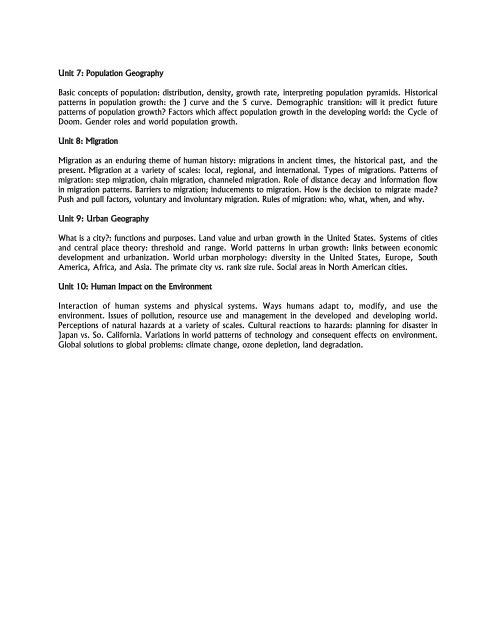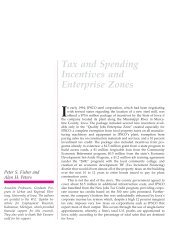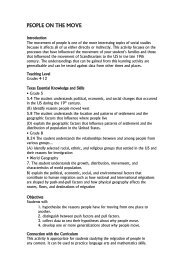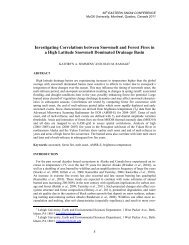Download Course Description
Download Course Description
Download Course Description
Create successful ePaper yourself
Turn your PDF publications into a flip-book with our unique Google optimized e-Paper software.
Unit 7: Population Geography<br />
Basic concepts of population: distribution, density, growth rate, interpreting population pyramids. Historical<br />
patterns in population growth: the J curve and the S curve. Demographic transition: will it predict future<br />
patterns of population growth? Factors which affect population growth in the developing world: the Cycle of<br />
Doom. Gender roles and world population growth.<br />
Unit 8: Migration<br />
Migration as an enduring theme of human history: migrations in ancient times, the historical past, and the<br />
present. Migration at a variety of scales: local, regional, and international. Types of migrations. Patterns of<br />
migration: step migration, chain migration, channeled migration. Role of distance decay and information flow<br />
in migration patterns. Barriers to migration; inducements to migration. How is the decision to migrate made?<br />
Push and pull factors, voluntary and involuntary migration. Rules of migration: who, what, when, and why.<br />
Unit 9: Urban Geography<br />
What is a city?: functions and purposes. Land value and urban growth in the United States. Systems of cities<br />
and central place theory: threshold and range. World patterns in urban growth: links between economic<br />
development and urbanization. World urban morphology: diversity in the United States, Europe, South<br />
America, Africa, and Asia. The primate city vs. rank size rule. Social areas in North American cities.<br />
Unit 10: Human Impact on the Environment<br />
Interaction of human systems and physical systems. Ways humans adapt to, modify, and use the<br />
environment. Issues of pollution, resource use and management in the developed and developing world.<br />
Perceptions of natural hazards at a variety of scales. Cultural reactions to hazards: planning for disaster in<br />
Japan vs. So. California. Variations in world patterns of technology and consequent effects on environment.<br />
Global solutions to global problems: climate change, ozone depletion, land degradation.
















